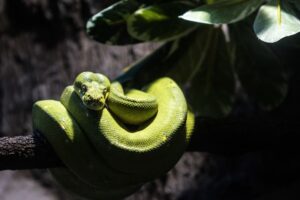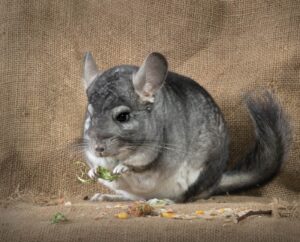Table of Contents
ToggleIntroduction
An African Sulcata tortoise’s life span can range from fifty to one hundred fifty years. The length of time a creature will survive is determined by several factors, one of which is its environment. How Long Do Sulcata Tortoises Live? The African Spurred tortoise is known by its subspecies designation, the Sulcata.
People enjoy keeping animals of this type as pets because they are easy to handle, readily available, resistant to disease, and have a long lifespan. The Sulcata tortoise’s natural habitat was along the outskirts of the Sahara Desert when it was first discovered. Because of this, these tortoises can thrive and have a long lifespan in settings that range from harsh to mild conditions.
Factors Influencing The Lifespan Of Sulcata Tortoises
The lifespan of a Sulcata tortoise can vary significantly depending on several factors. Understanding these factors is crucial for providing the best care and ensuring your pet has a long and healthy life.
Diet: Sulcata tortoises are herbivores, and their diet plays a pivotal role in their overall health and longevity. In the wild, they graze on various high-fiber grasses and leafy greens, which provide essential nutrients and help maintain proper digestion. As pets, it’s crucial to replicate this diet to ensure their well-being. Obesity and its related health problems, such as organ damage, joint problems, and a shortened lifespan, can be avoided with a healthy, well-balanced diet.
Habitat: The habitat in which a Sulcata tortoise lives is a significant factor influencing its lifespan. In the wild, they inhabit arid regions with a specific climate, including high temperatures and low humidity. Captive Sulcatas require a similar environment. Providing an appropriate enclosure with proper temperature, humidity, and shelter is essential. Inadequate housing can lead to health issues and a reduced lifespan.
Veterinary Care: Regular veterinary care is vital to the health of Sulcata tortoises. Routine check-ups can help identify and address health issues early, preventing them from becoming life-threatening. Common health problems in Sulcatas include respiratory infections, shell rot, and parasites, which can affect their longevity if left untreated.
Exercise and Enrichment: Sulcata tortoises are active animals in their natural habitat, requiring space to roam and engage in natural behaviors. Providing a suitable enclosure with opportunities for exercise and mental stimulation is crucial. Inadequate space and boredom can lead to stress and a shorter lifespan.
Why Do Sulcata Tortoises Live So Long?
Everyone is aware that turtles have a remarkably long lifespan. Some turtles can live to reach around 400 years old depending on the species. Tortoises are closely related to turtles, share many characteristics, and have a long lifespan. Consider the case of the Sulcata tortoise as an illustration. It is one of the tortoises with the longest lifespan on the earth.
The life expectancy of a Sulcata tortoise is up to 150 years. Have you ever pondered the topic of how these tortoises manage to live for such an incredibly long time? The inscribed DNA of these organisms is likely the most straightforward explanation. The species has a high genetic probability of living for at least another century.
The Development Of A Sulcata Tortoise Throughout Its Life
Their diet influences their pace of growth, the conditions of their habitat, the environment, and their genetics. Their first phase of development occurs at a breakneck speed. They are approximately 44 millimeters in size when they are born, but they rapidly grow to 6-10 inches (15-25 centimeters) in the first few years of their lives after being born.
More rainy areas have a quicker rate of growth for these plants. Between the ages of 10 and 15, they undergo a process of sexual maturation. They are no longer vulnerable to being eaten by predators once they have reached a weight of no less than 30 kilograms (about 66 pounds).
The Effect Of Frequent Health Problems On Survival Rates
To understand how to extend the lifespan of your Sulcata tortoise, it’s crucial to be aware of the common health issues they may face. Some of these issues include:
Respiratory Infections: Tortoises can get respiratory ailments from exposure to cold and damp conditions. The respiratory system is affected; this condition can be life-threatening if left untreated. To prevent respiratory infections, ensure your tortoise has a warm, dry enclosure and monitor them for any signs of illness, such as nasal discharge or labored breathing.
Metabolic Bone Disease (MBD): Insufficient calcium in the tortoise’s diet or an inability to efficiently metabolize calcium describe the condition known as metabolic bone disease (MBD). It can soften the shell, limb deformities, and other serious health issues. Providing a calcium-rich diet and UVB lighting for proper calcium absorption prevents MBD.
Shell Problems: Shell problems can arise from various causes, including trauma, poor nutrition, and inadequate habitat conditions. Regular inspection of your tortoise’s shell is crucial to identify any issues early. While usually treatable, injuries to the tortoise’s shell can have a major impact on the animal’s lifetime.
Parasites: Internal and external parasites can harm a tortoise’s health. Regular fecal exams and antiparasitic treatments can help prevent and manage these infestations.
Overgrowth of Beak and Nails: Sulcata tortoises may experience overgrowth of their beak and nails, leading to difficulty eating and moving. Regular trimming or filing of these structures is necessary to prevent these issues.
Conclusion
Sulcata tortoises are captivating creatures that can be cherished as long-term companions if provided with the appropriate care and living conditions. While various natural factors influence their lifespan in the wild, those kept as pets can enjoy extended lives with the right care and attention.
By understanding and addressing the factors that impact their lifespan and providing proper nutrition, habitat, and healthcare, you can ensure that your Sulcata tortoise lives a long and fulfilling life, potentially reaching the century mark or more. Remember that responsible ownership and a commitment to the well-being of these remarkable reptiles are key to their longevity and happiness.







